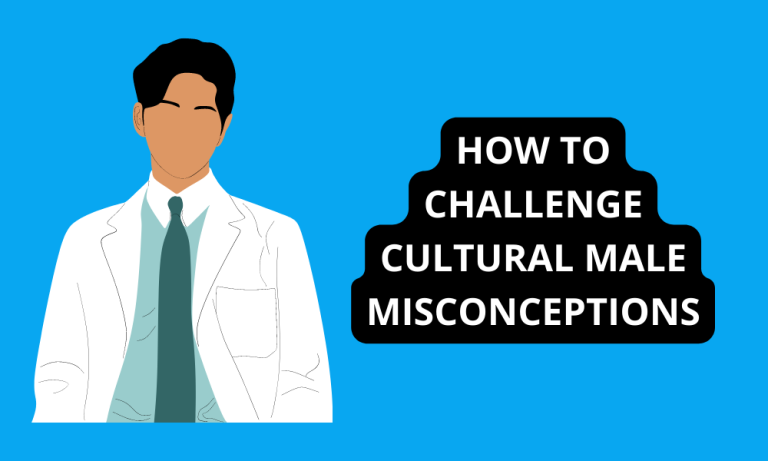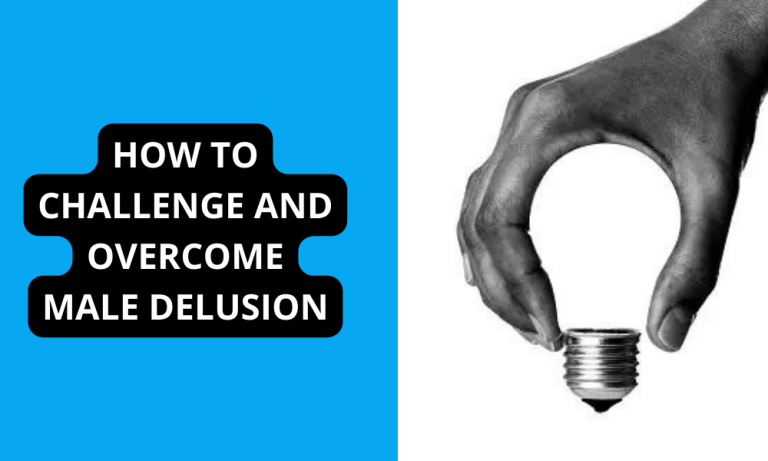How to Educate About True Male Perception?

As someone who works closely with men’s issues on a regular basis, I’ve found there are many misconceptions about the true nature of the male experience. Through my research and discussions with countless men, I’ve gained unique insight into how males genuinely perceive the world – insights I think are crucial to share in order to foster greater empathy and understanding between all people.
In this article, I will give you a candid look into the realities of male perception, going beyond surface level assumptions to illustrate how hormones, societal influences and biological hardwiring all shape the male experience in often misunderstood ways. My goal is to help dispel common myths and supply you with evidence-based knowledge that can aid in sensitive discussions on these topics.
After outlining key findings onmale psychology and development, I will provide guidance on how to diplomatically educate others – whether in personal relationships, educational settings or the public sphere. By approaching this subject with an open yet informed mindset, we have an opportunity to build more inclusive communities where people of all backgrounds feel heard, respected and able to reach their fullest potential.
Understanding the Male Experience from Within
Let’s begin with a brief overview of how masculinity normally manifests from a first-person male perspective. From a young age, males are subconsciously attuned to competitiveness, hierarchy and danger signals in their surroundings in ways anatomically similar to our ancient ancestors. The surging concentrations of testosterone that kick in during puberty only enhance these predispositions.
Subjectively, the world consequently can seem more threatening, challenging and stress-inducing for males compared to females – a difference that perplexes many onlookers. However, this heightened state of alertness and impulse for assertiveness wasevolutionarily adaptive for protecting vulnerable family groups and securing resources throughout humanity’s long struggle for survival on the savannahs.
The trade-off is that intimate emotional expression does not come as naturally to males as a result, which leaves some feeling alienated and misunderstood. This plays out subtly in diverse ways, from masculine social behaviors to risk-taking proclivities to how compassion is outwardly displayed. At the core, males crave respect, purpose and fraternity just as much as anyone else. Their hardened exteriors often mask inner fragility stemming from strict gender roles that leave little room for sensitive sides of self.

Understanding this can help amend prevalent misconceptions that males don’t experience emotions as deeply or that masculinity is solely defined by aggression, sexual dominance or lack of vulnerability. The reality is far richer once you grasp the intrinsic drives and social inheritances that shape the male experience from within our perspectives. This insight forms a crucial starting point for thoughtfully guiding discussions on gender issues. You can test the Males Delusion Calculator to analyze your perceptions.
Navigating Societal Influences on Masculine Development
No person develops in a vacuum, and males are invariably molded by complex societal influences as well. Some influences have benefits, whereas others can be damaging if gone unchecked. Recognizing this complexity is key to having compassionate dialogues.
Positive role models, responsible guidance, and a supportive community are paramount for healthy masculine socialization. Unfortunately, these supports are declining for many boys growing up today. Simultaneously,harmful societal messages distorting masculinity pervade mainstream channels like ignorant portrayals in media and peers encouraging aloofness over vulnerability.
The potency of these distorted influences shouldn’t be ignored, as impressionable male minds can end up internalizing dangerously misguided notions about what it means to “be a man.” This fuels crises like rising rates of male suicide, dropping out of education systems, drug abuse and relationship issues later in life. Preventative solutions require acknowledging real societal failings impacting boys instead of dismissing “toxic masculinity” as an individual pathology.

By the same token, not all traditional masculine norms deserve blanket condemnation either. Elements like duty, courage, integrity and stoicism gave purpose and structure to past generations and still benefit many males if balanced with emotional fluency. A balanced, nuanced perspective is needed to curb extremes that damage well-beingwhile preserving virtues of a compassionate masculinity. Overall,empathy and wisdom must guide societal influences on developing male identities.
The Physicality of Masculine Perception
Physiology also plays an understated yet profound role in male perceptual tendencies. Testosterone primes the male brain for spatial-mechanical reasoning whereas estrogen enhances verbal-social skills, for instance. This translates to emerging adult males generally excelling more in systemizing over empathizingrelative to females – tendencies reflecting our shared evolutionary inheritance for hunting, tool-making and physical tasks.
Male visual perception centers are wired for constantly scanning surroundings moreso than females as well. Our vision zones in on motion, contrasts and potential threats faster with a wider amplitude. It’s why sports enthrall many males and why subtle facial expression shifts may pass more under the male visual radar compared to females more keyed into minute interpersonal cues.
This physical configuration contributes greatly to how malessubjectively experience the world around us. Academics need appreciation that classroom designs centered on stillness don’t cater to natural fidgeting, whereas dangers seeming innocuous to some might alarm male instincts attuned to risk assessment. Recognizing our innate perceptual filters helps inter-gender relations avoid unnecessary conflicts when processing reality through different innate lens.
Likewise in relationships, females sharing feelings may frustrate males hardwired more for problem-solving; while male detachment hurts mates craving intimacy. Learning to acknowledge and navigate our inherent perceptual diversities via empathy and communication leads to healthier bonds between all people.
Navigating Triggers and Receptiveness
When broaching sensitive gender topics, triggers will inevitably arise considering the deeply personal nature of identities. Key is fostering receptive atmospheres where all feel safe yet motivated toward growth.Some factors enhancing receptiveness include:
- Leading with empathy, care and validating humanity in “us” vs. “them”. People listen keenest tonon-threatening messengers they feel genuinely seek mutual understanding.
- Focusing on solutions, not accusations. Frame discussions constructively around progress, not division. People support endeavors bettering lives, not attacks making them defensive.
- Using inclusive language respecting diverse experiences. Phrasing shows consideration for myriad perspectives without assumption or invalidation.
- Making space for ventilation of difficult feelings. Give latitude for frustrations to surface in calming settings where catharsis can cultivate fresh clarity.
- Encouraging reflection over reaction. Pause intervals between sharing and responding so dialogues occur with presence of mind over reactivity.
- Modeling civil discourse yourself. Lead with patience, respect and active listening so others follow that dignified example.
Diplomatic groundwork like this helps steer conversations to positive ends where new bonds and awareness take root through fellowship instead of friction. There will always be disagreement, but receptiveness paves the best paths forward.
Tips for Productive Discussions
Here are additional tips when facilitating discussions on these topics:
- Lead with positivity and solutions. Frame issues constructively rather than accusation.
- Share speaking time equally and avoid debate-style formats.
- Validate diverse experiences but don’t generalize.
- Promote perspective-taking via respectful questions.
- Define agreed terms to prevent talking past each other.
- Periodically summarize shared perspectives for positivity.
- Remind of mutual goal – not “winning” but understanding.
- Outside of event, debrief privately any conflicts that arose.
- Provide follow-ups for further reading, support and growth.
Conclusion
The most important thing to recognize is our shared humanity. While neurological, hormonal and social influences shape our diverse experiences in life to a degree, we all ultimately desire the same things – to love and be loved, find purpose and fulfillment, and live freely in our identities.
By making an effort to understand each other with empathy, patience and compassion, we can resolve misconceptions and cultivate relationships defined by dignity, care and justice for people of all backgrounds. Our differences need not divide us if we choose to recognize our interconnectedness instead.






